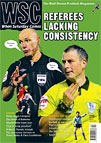 Monaco were Champions League regulars a decade ago but now they are trying to avoid consecutive relegations, writes James Eastham
Monaco were Champions League regulars a decade ago but now they are trying to avoid consecutive relegations, writes James Eastham
Eight years ago Monaco reached the Champions League final. They are now battling against relegation to France’s semi-professional third tier. It is a familiar story of decline. Since Didier Deschamps quit as coach 16 months after that European summit against Porto, a succession of managers, directors and presidents have been turfed out or walked away. Each has taken with him a blueprint for success that either failed or was dropped before coming to fruition.
At one point, Monaco wanted to “internationalise their brand”. To this end, they signed South Korea international Park Chu-Young (now in Arsenal’s reserves) and one-time USA wonderkid Freddy Adu. Park did well; Adu less so. The project was abandoned. The biggest mistake Monaco have made is relying less and less on their acclaimed youth system. The club’s centre de formation had been held up as a model. It provided four members of France’s 1998 World Cup-winning squad in Emmanuel Petit, Lilian Thuram, David Trezeguet and Thierry Henry. In recent years the club has neglected homegrown talent, wasting millions instead on imported players that came for the money and left little trace.
Monaco’s relegation last May ended a run of 34 seasons in France’s top division. They went down with 44 points, the highest-ever tally for a relegated side in a 38-game season. But they had been heading in that direction for some time.
During the summer transfer window, no fewer than 30 players came and went as manager Laurent Banide modified his squad for life in Ligue 2. Many of those deals were concluded after the season started. The result was an unsettled side in the opening weeks of the campaign. Widely tipped for an immediate return to Ligue 1, Monaco picked up just four points from their opening six matches. President Etienne Franzi sacked Banide on September 12.
To replace Banide, Franzi turned to Marco Simone. The former Monaco striker is fondly remembered for scoring the goals that helped the club to their last League title in 2000. Since retirement, he had become a regular pundit on the Canal Plus flagship Sunday night show, Canal Football Club. When Monaco came calling, the Italian traded his place in the TV studio for the manager’s bench.
There were obvious concerns. It was Simone’s first coaching role. Franzi admitted it was a risk. On his arrival, Simone seemed to agree: “I’m not a manager.” He appeared to be taking that too literally as he managed just one win in his first 12 league games. Tactics changed every week. Defending was poor. Players lost confidence. Monaco went into the winter break bottom of the table.
During the festive recess, Dmitry Rybolovlev bought two thirds of the club’s shares. The 46-year-old Russian, 93rd in Forbes magazine’s 2011 billionaires list, made his fortune in fertilisers. He has yet to reveal why he invested and what plans he has for the club. UEFA president Michel Platini is an outspoken opponent of foreign ownership of clubs. He will have concerns.
Press predictions that Rybolovlev would sanction heavy spending during January did not exactly come true. The club signed ten players, none of whom is a household name. Yevgeny Smolentsev was appointed sporting director; he held a similar post at Spartak Moscow. Filips Dhondt, director of Euro 2000, arrived as general manager. Simone remains in his job, thanks to two wins and a draw in January.
It is easy to dismiss Monaco as the plaything of the Grimaldi royal family in a world where football is a footnote. But the club has an important place in the sport’s history. From 1978 to 2000, they won five League titles and three French cups. Under Arsène Wenger, they reached the European Cup-Winners Cup final in 1992. They and Marseille are the only French clubs to have reached the finals of two different European competitions. Their youth academy not only helped les Bleus to win the World Cup but has supplied squads across France for decades.
It is a myth that Monaco have no supporters. Attendances are small, but that is to be expected considering the size of the Principality. Last season I sat next to the away section that contained more than 100 Monaco supporters who had made the 700-mile journey north for a league game at Lille. In France, that is an ample following. This season, average home crowds are more than ten per cent of the Principality’s 35,000 population. Monaco matter. That is why there will be a keen national focus on what happens next. The club has been losing its soul for some time. You wonder how much of it will be left when Rybolovlev has gone.
From WSC 301 March 2012